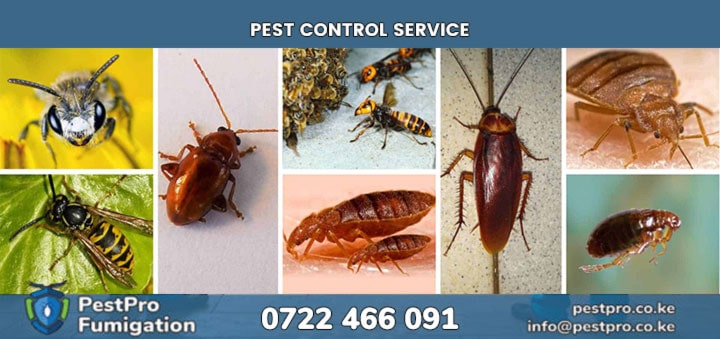Narok County, located in Kenya’s Rift Valley, experiences a diverse range of pest infestations due to its varied climate, agricultural activities, and ecological conditions. The region’s warm temperatures, coupled with its mix of urban and rural environments, create favorable conditions for numerous pests that threaten homes, crops, and public health. Below is an overview of the most common pests in Narok County, as observed by PestPro Fumigation Kenya.
Termites
Termites are among the most destructive pests in Narok County. The region’s warm and humid climate supports subterranean and drywood termite colonies, which thrive in both urban and rural settings. These pests target wooden structures, furniture, and crops such as maize and sugarcane, causing significant economic losses. Subterranean termites build mud tubes to access food sources, while drywood termites infest dry timber, often going unnoticed until severe damage occurs. Regular inspections and soil treatments are essential to mitigate their impact.
Cockroaches
Cockroaches are prevalent in Narok’s urban areas, particularly in homes, restaurants, and markets. Species like the German cockroach and American cockroach flourish in warm, moist environments, feeding on food scraps and organic waste. These pests pose health risks by spreading bacteria such as Salmonella and E. coli, contaminating surfaces and food. Their rapid reproduction makes infestations challenging to control without professional intervention, including targeted baiting and residual sprays.
Mosquitoes
Narok County’s proximity to water bodies and seasonal rainfall create ideal breeding grounds for mosquitoes, particularly Anopheles, Aedes, and Culex species. These pests are vectors for diseases like malaria, dengue, and chikungunya, posing a significant public health concern. Stagnant water in ditches, containers, and irrigation channels serves as breeding sites. Effective mosquito control requires eliminating standing water, using larvicides, and applying fogging treatments in high-risk areas.
Rodents
Rats and mice are common in both rural and urban areas of Narok County. Species such as the roof rat and house mouse invade homes, warehouses, and farms, damaging stored grains, contaminating food, and spreading diseases like leptospirosis and hantavirus. Their gnawing habits also cause structural damage to buildings and electrical wiring, increasing fire risks. Integrated pest management, including trapping and sealing entry points, is critical for rodent control.
Bed Bugs
Bed bugs have become increasingly common in Narok’s urban centers, particularly in hotels, hostels, and residential areas. These nocturnal pests feed on human blood, causing itchy bites and discomfort. Their small size and ability to hide in cracks, mattresses, and furniture make them difficult to detect and eliminate. Infestations often spread through luggage and second-hand furniture, necessitating thorough inspections and heat treatments for effective control.
Ants
Ants, including black ants and fire ants, are widespread in Narok County. These pests invade homes and farms in search of food and water, contaminating surfaces and damaging crops. Fire ants, in particular, are aggressive and deliver painful stings, posing risks to humans and livestock. Their colonies, often located in soil or under structures, require targeted baiting and barrier treatments to prevent re-infestation.
Weevils
Weevils, such as the maize weevil and red flour beetle, are a major concern for Narok’s agricultural sector. These pests infest stored grains, including maize, wheat, and rice, leading to significant post-harvest losses. Poor storage conditions and high humidity exacerbate infestations. Fumigation and proper storage practices, such as using airtight containers, are essential to protect grain supplies.
Flies
Houseflies and fruit flies are abundant in Narok due to its agricultural activities and waste disposal challenges. These pests spread diseases like typhoid and dysentery by contaminating food and surfaces. Fruit flies target ripening produce, impacting farmers’ yields. Effective waste management and targeted insecticide applications are key to controlling fly populations.
PestPro Facebook Page
Medium
